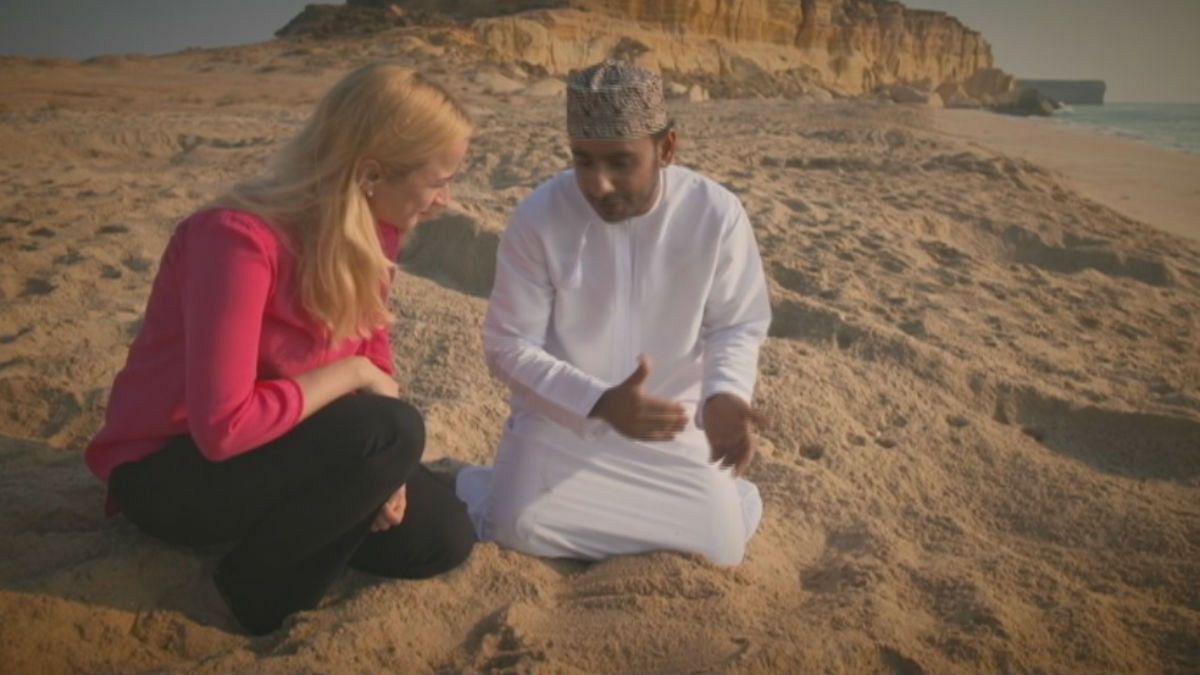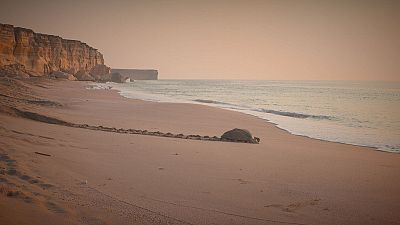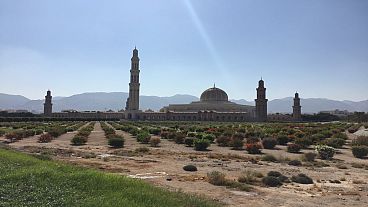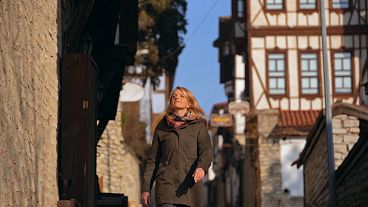Our second Oman Life adventure kicked off at the marina in Muscat where we had the chance to spend the day on a very special boat known as a Dhow. The wooden vessel is a marvel of Oman’s maritime heritage and have been used to sail across oceans for centuries. On this Dhow we left for the Bandar Kayran nature reserve. We were accompanied on our voyage by playful dolphins swimming off the bow of the dhow.

The lagoon is a beautiful place, surrounded by limestone formations that are up to 250 million-years-old. The sea is positively teaming with life! It has more than 200 species of fish and 45 types of Coral reef, but what we really came to see were the famous turtles.


In order to witness a very special moment in nature we headed further east to Ras al Jinz. It is here that the endangered sea reptiles laid their precious eggs.

We ventured out to the beach at night, luckily our guide was there to lead the way because it was really pitch black. Along with the gentle breaking of the waves we could hear the subtle sound of the turtles burrowing into the sand. It was a unique experience and we were lucky enough to see three of the turtles just as they started digging their nests.
With flippers more suited to water than sand progress was slow and the turtles took many breaks as they tried to dig the perfect hole for their offspring. It must be at least half a meter down so that the eggs are safe. The eggshells are soft so they don’t crack when they fall on top of each other, one-by-one. The whole process takes up to two hours.

November is a great time to go because you’re not only seeing the laying of eggs but also the hatchlings. Each turtle lays around 100 eggs which incubate for up to 50 days. The temperature of the sand determines the gender of the babies. Eggs laid close to the water will gestate below 28 degrees producing mostly males. further away from the sea the sand temperature is above 29 degrees so mainly female turtles will be born from these nests.


Watching the baby turtles emerging from beneath the sand to scurry out to see was one of the most beautiful things I’ve ever witnessed.
The baby turtles emerge in groups of about 20 and they build a kind of ladder and climb on top of each other to make it out of the hole. They scramble immediately towards the beach in a desperate attempt to survive. But the odds are against them, only about one or two in a thousand will make it.
As they try to make it to the ocean they are easy pickings for a whole host of predators. Foxes and giant crabs dig in the sand all day to get at them. Added to this, seagulls are a major threat as they swoop down to gobble them up. But even if they make it to the sea they are far from being safe!

One of the most fascinating things for me is the fact that the turtle comes back after around 25 years to the beach where it was born. In one year they can travel distances over 3,000 kilometres. To witness this circle of life was a unique and mesmerizing experience.
Our journey took us then to Sur because we wanted to discover the tradition of building the traditional Dhows. These distinctive boats are handmade – from top to bottom. We visited an old shipyard where they still built these wooden vessels with the same techniques they used centurieres ago. What astonished me the most is that they don’t use any drawings, it’s all in the masterminds head. They are a true marvel of craftsmanship.







